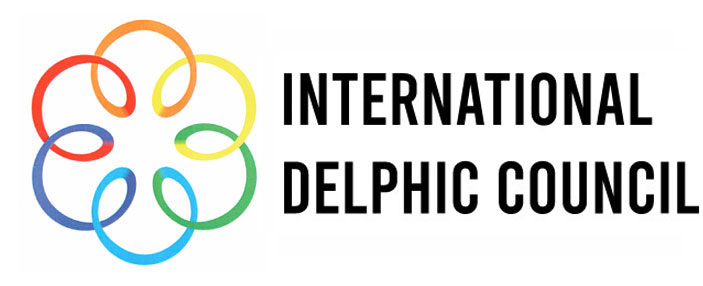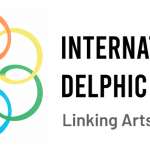Introduction
In 1894, after almost 1,500 years of dormancy, Pierre de Coubertin succeeded, after considerable difficulty, in reviving the Olympic Athletic Games which began in Olympia, Greece to symbolize the athletic spirit and competition of the body. The cultural, musical and artistic counterpart of the Olympic Games were the Pythian Games, begun in Delphi, Greece in the same time period. The Olympic and Pythian Games complimented each other, and were celebrated peacefully for almost 1000 years and had at the time a similar level of importance in society.
On 15 December 1994, exactly 100 years after re-institution of the Olympic Games, representatives from 20 nations and territories assembled in Berlin, Germany following the invitation of J. Christian B. Kirsch. They founded the International Delphic Council – a Not-For-Profit Non-Governmental Association with International Headquarters in Berlin, Germany – as the parent organization of the International Delphic Movement, and ignited a spiritual rebirth of the Pythian Games, after 1,600 years of dormancy, under the name ‘Delphic Games’ as the keystone event of the International Delphic Movement (IDM).
Organizational Structure
The International Delphic Movement is structured in six tiers: International Delphic Council (worldwide), Regional Delphic Council (regional/continental), National Delphic Council (national), Delphic Clubs (local), Specialized Arts and Culture Organisations (local/international) and Individuals (local, regional, national, worldwide). The local Delphic Club level, allows direct participation of individual members in every aspect of activity, and is the ‘grassroots’ foundation on which the national, regional and international levels are based. Membership at all levels is designed to be inclusive, not exclusive or discriminatory. However, particularly in cultural areas, some people prefer freedom of association based on the common positive values of shared heritage. Therefore, newly formed Delphic Clubs, or existing organizations ‘Designated’ as a ‘Delphic Club’ and retaining their existing name, may be composed of individuals and organizations associated by:
- Common Cultural Interests, based on form of performance, age, ethnic heritage, etc. plus a geographic area, i.e. Viennese Boy’s Choir, Traditional Irish Dancers of County Mayo, Ireland, Oneida American Indian Nation – USA, Modern Graffiti Artists of Night City, String Instrument Musicians of Mexico, Chinese Circus of Beijing; or
- Different Cultural Interests, but all living or working within a specific geographic membership area, i.e. Rive Gauche District of Paris, Metro London, Rhine Valley, (local, city-wide, regional), and in which membership is open to all cultures and ethnic groups within that specific geographic membership area.
Establishment and encouragement of local Delphic Clubs
The establishment and encouragement of local Delphic Clubs are, and will remain, a priority focus of the Membership Development activity of the International Delphic Council. Each country must have a minimum number of Delphic Clubs, or Designated Delphic Clubs, based on population, before the establishment of a National Delphic Council which can be admitted to the International Delphic Council. Once founded and admitted to the IDC, a primary and continuing responsibility of a National Delphic Council is the promotion and establishment of local Delphic Clubs.
The national, regional and international organizations of the IDC require representative participation, and in that sense they are federations composed of member organizations, i.e. the Delphic Clubs are members of the National Delphic Council, and the National Delphic Councils are members of the Regional Delphic Council as being finally members of the International Delphic Council. At the national and regional levels it is possible to have individual members, and at the worldwide level to have a Delphic Club as a direct member, but only if there is no Delphic Club or National Delphic Council or Regional Delphic Council to which an individual or Delphic Club can join. Although possible, that type of membership is an exception.
No restriction at any level
However, there are no restrictions whatsoever at any level for direct membership or sponsorship by non-governmental, governmental or educational corporations, partnerships, foundations, associations, federations, agencies, commissions, faculties and other similar groups which share and support the goals, purposes and activities of the International Delphic Movement. Such relationships are in fact encouraged to broaden community awareness and involvement, membership, financial support, and access to organizational and public relations talents and expertise.
IDC Bye-Laws & Structure
The By-Laws and organizational structure presented here for a typical National Delphic Council (within a separate Member Brochure) are substantially duplicated from those of the International Delphic Council. The By-Laws and organizational structure for a typical Delphic Club are drawn from the By-Laws of a typical National Delphic Council in abbreviated form due to the smaller and more informal activity environment of a Delphic Club.
The local, national, regional and worldwide levels all have parallel activities, organization, technical provisions and administrative procedures, but with different organizational vocabulary, i.e. Membership (local) vs. National Assembly (national) vs. Session (international) and President (Local) vs. Managing Director (national) vs. Secretary-General (international). Each level provides opportunities to gain a wide variety of organizational and cultural activity experience and knowledge. Similar procedures reduce learning time and make work at the next organizational level easier and more effective.
To insure the success of the International Delphic Movement, Delphic Clubs, National Delphic Councils and Regional Delphic Councils should be established and guided by dedicated, talented, energetic, influential individuals or ‘corporate initiators’ who can help build a strong membership base, and establish cross-cultural and business links to support growth and development
To aid the efforts of these resourceful organizers and founders to more easily establish and expand Delphic Clubs, National Delphic Councils and Regional Delphic Councils in a co-ordinate and integrated format, the IDC has developed a standardized set of draft By-Laws, indexed and cross-referenced for ease of use, and able to be modified to local or national requirements.
Integration of the most active persons
Experience has shown that many of the most active persons will be simultaneously functioning on the local, national, regional and worldwide level. It is important therefore, that the organizational structure of all three levels of the International Delphic Movement must be integrated, unified, smooth functioning, efficient, designed to be effective without unnecessary procedural interference, and encourage freedom of expression through a democratic process which is culturally sensitive. On the national, regional and worldwide levels the structure must also provide entry level, or temporary, admission standards to be established to encourage membership and growth, and reward achievement and contribution of effort.
Quick familiarity with the organizational structure at all levels will allow the maximum effort to be focused on achieving our collective goals in the interest of peaceful and tolerant cultural co-existence through cross-cultural education.
Welcome to the International Delphic Movement!


